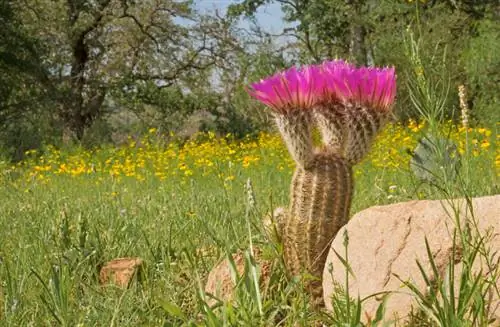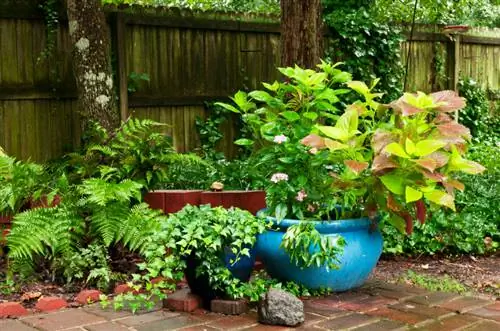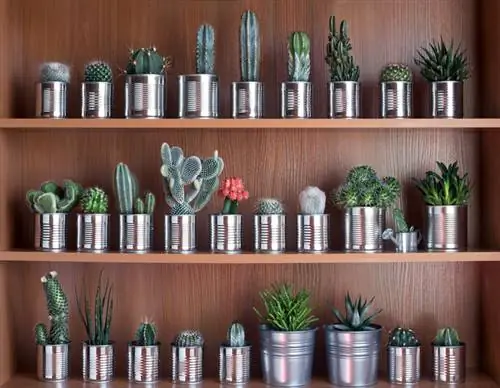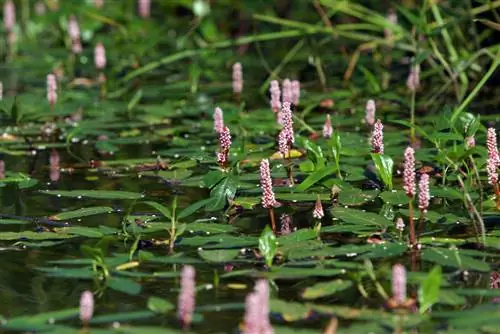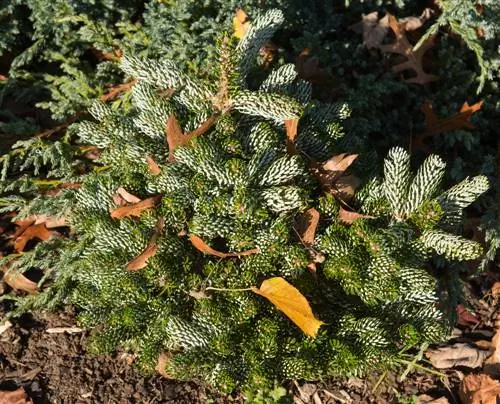- Author admin [email protected].
- Public 2023-12-16 16:46.
- Last modified 2025-01-23 11:21.
Not all cactus species are suitable for living outdoors. So that the bizarre desert creatures thrive in the garden and bloom profusely, the selection focuses on winter hardiness. We have put together popular and proven frost-hardy species for you here.
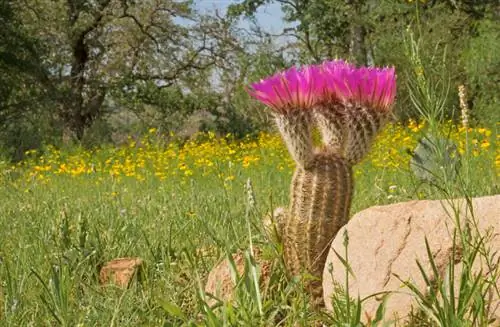
Which types of cactus are suitable for outdoor use?
Winter-hardy cacti for the garden are prickly pear cacti (Opuntia), hedgehog cactus (Echinocereus) and ball cacti (Escobaria). They can withstand temperatures down to -25 degrees Celsius. A sunny location and sandy-loamy or sandy-gravelly soil are important for overwintering outdoors.
Cacti for outside must be hardy
In order to enrich the garden design with striking cacti, a few selected species come into consideration. The following overview introduces you to recommended cacti that demonstrate their staying power outdoors all year round:
- Prickly pear cacti (Opuntia), primarily the disc-shaped Opuntia phaeacantha and the columnar Cylindropuntia imbricata
- Hedgehog columnar cactus (Echinocereus), especially E. baileyi, E. caespitosus, E. coccineus, E. inermis
- Spherical cacti (Escobaria), especially E. missouriensis, E. vivipara, E. orcuttii, E. sneedii
These cacti can withstand severe frost down to -25 degrees Celsius. A sunny location with sandy-loamy or sandy-gravelly soil is an important prerequisite for undamaged wintering. In September/October, stop the water supply and no longer apply fertilizer. The plants then reduce their water supplies and increase the s alt content in the cell water to protect themselves from frost.
These cacti depend on rain protection outside
The following cacti lose their winter hardiness outdoors if they are exposed to rain and snow:
- Hybrids of the hedgehog cactus Echinocereus inermis as well as Echinocereus octacanthus and viridiflorus
- Desert cacti of the genus Gymnocalycium, especially the species G. andreae
- All varieties that have emerged from hardy Opuntia and Escobaria wild species
In order to offer moisture-sensitive cacti outdoors sufficient protection, a location under a canopy is sufficient. The thorny fellows also feel well protected under a simple superstructure made of wooden posts and a roof made of greenhouse film. The little house should be open on two sides so that the air can circulate.
Tip
Don't trust full-bodied promises about stable winter hardiness if the cacti were grown in the protected climate of a warm greenhouse. Only species bred outdoors can actually stand up to the rigors of a Central European winter. Here a cactus can acquire the necessary frost resistance as a seedling or cutting.

